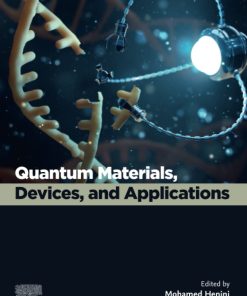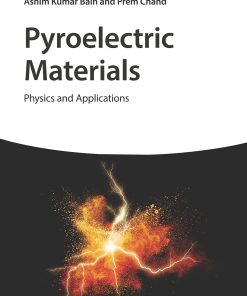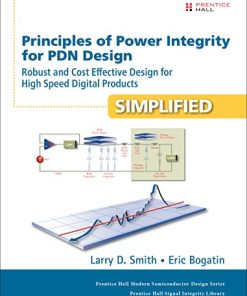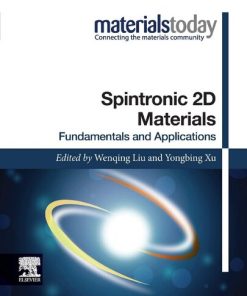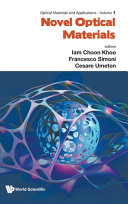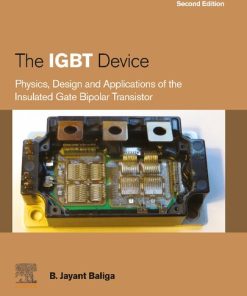(Ebook PDF) Wide Bandgap Semiconductor Power Devices Materials Physics Design and Applications 1st edition by Jayant Baliga 0081023073 9780081023075 full chapters
$50.00 Original price was: $50.00.$25.00Current price is: $25.00.
Wide Bandgap Semiconductor Power Devices_ Materials, Physics, Design, and Applications 1st edition by B. Jayant Baliga – Ebook PDF Instant Download/DeliveryISBN: 0081023073, 9780081023075
Full dowload Wide Bandgap Semiconductor Power Devices_ Materials, Physics, Design, and Applications 1st Edition after payment.
![]()
Product details:
ISBN-10 : 0081023073
ISBN-13 : 9780081023075
Author: B. Jayant Baliga
Wide Bandgap Semiconductor Power Devices: Materials, Physics, Design and Applications provides readers with a single resource on why these devices are superior to existing silicon devices. The book lays the groundwork for an understanding of an array of applications and anticipated benefits in energy savings. Authored by the Founder of the Power Semiconductor Research Center at North Carolina State University (and creator of the IGBT device), Dr. B. Jayant Baliga is one of the highest regarded experts in the field. He thus leads this team who comprehensively review the materials, device physics, design considerations and relevant applications discussed.
Wide Bandgap Semiconductor Power Devices Materials Physics Design and Applications 1st Table of contents:
1 Introduction
1.1 Silicon power devices
1.2 Silicon power device applications
1.3 Silicon carbide ideal specific on-resistance
1.4 Silicon carbide power rectifiers
1.5 Silicon power MOSFETs
1.6 Silicon carbide power MOSFETs
1.7 Silicon carbide power junction barrier Schottky field effect transistors (JBSFETs)
1.8 Silicon carbide power MOSFETs with improved high frequency performance
1.9 Silicon carbide bidirectional field effect transistor
1.10 Silicon carbide power device applications
1.11 Gallium nitride power devices
1.12 Gallium nitride power device applications
1.13 Summary
References
2 SiC material properties
2.1 Crystal and band structures
2.2 Electrical properties
2.2.1 Impurity doping and carrier density
2.2.2 Mobility
2.2.3 Drift velocity
2.2.4 Impact ionization coefficients and critical electric field strength
2.3 Other physical properties
2.4 Defects and carrier lifetimes
2.4.1 Extended defects
2.4.2 Point defects
2.4.3 Carrier lifetimes
References
3 Physical properties of gallium nitride and related III–V nitrides
3.1 Crystal structure and related properties
3.2 Polarization charges
3.3 Substrates for GaN epitaxial growth
3.3.1 Sapphire substrates
3.3.2 SiC substrates
3.3.3 Silicon substrates
3.4 Band structure and relevant properties
3.4.1 Effective mass of carries
3.4.2 Effective density of states
3.5 Transport properties
3.5.1 2D mobility in GaN/AlGaN structures
3.6 Impact ionization coefficients
3.7 Defects in GaN
3.7.1 Intrinsic point defects
3.7.2 Other defects
3.7.3 Impurities in GaN
3.7.4 Group-II impurities
3.7.5 Group-IV impurities
3.7.6 Group VI impurities
3.7.7 Deep levels
3.8 Conclusions
References
4 SiC power device design and fabrication
4.1 Introduction
4.2 SiC diode
4.2.1 Introduction
4.2.2 SiC-JBS device design for low on-state loss
4.2.3 Edge terminations for SiC-JBS device
4.2.4 SiC-JBS device design for higher ruggedness
4.2.5 SiC-JBS and Si-IGBT hybrid type module
4.2.6 PiN diode
4.2.7 Bipolar degradation
4.2.8 Summary
4.3 SiC-MOSFET
4.3.1 Introduction
4.3.2 Device structure and its fabrication process
4.3.2.1 Planar MOSFET structure
Fabrication process
Blocking characteristics
Exclusive process technologies for SiC-MOSFET
Cell design
IEMOSFET devices
4.3.2.2 UMOSFET structure
Fabrication process
Blocking characteristics
UMOSFET with gate shielding structure
IE-UMOSFET and V-groove trench devices
4.3.2.3 SiC-MOSFET loss estimation due to its high drain–source capacitance
4.3.2.4 Short-circuit safe operating area
4.3.2.5 Improvement of trade-off characteristic between on-resistance and SCSOA for SiC UMOSFET stru
4.3.3 Future SiC-MOSFET structure
4.3.3.1 Monolithically integrated SiC-MOSFET and SBD structure
4.3.3.2 Superjunction MOSFET device
4.3.3.3 SiC MOSFET with reverse blocking capability
4.3.3.4 Complementary p-channel MOSFET device
4.3.4 Summary
4.4 SiC-IGBT
4.4.1 Introduction
4.4.2 Device structure and its fabrication process
4.4.2.1 p-channel IGBT or n-channel IGBT
4.4.2.2 Flip-type IEIGBT structure
4.4.3 Summary
References
5 GaN smart power devices and integrated circuits
5.1 Introduction
5.1.1 Material properties
5.1.2 Epitaxy and doping
5.1.3 Polarization and 2DEG
5.1.4 MOS
5.1.5 Power device applications
5.2 Device structures and design
5.2.1 Lateral
5.2.2 Vertical
5.3 Integrated device processes
5.3.1 Lateral
5.3.2 Vertical
5.4 Device performance
5.4.1 Static
5.4.2 Dynamic switching
5.4.3 Robustness
5.4.4 Device choices in applications
5.5 Commercial device examples
5.5.1 Discrete transistors
5.5.1.1 Efficient power conversion
5.5.1.2 Panasonic/Infineon
5.5.1.3 GaN systems
5.5.2 Hybrid transistors
5.5.2.1 Cascoded (International Rectifier (IR)/Infineon)
5.5.2.2 Cascoded (Transphorm)
5.5.2.3 Direct-drive transistors (Texas Instruments)
5.5.3 Integrated transistors
5.5.3.1 Navitas
5.6 Monolithic integration
5.6.1 Power ICs
5.6.2 Optoelectronic ICs
5.7 Future trend, possibilities, and challenges
Acknowledgments
References
6 GaN-on-GaN power device design and fabrication
6.1 Introduction
6.2 Requirements from a power switch
6.2.1 Normally-off operation
6.2.2 High breakdown voltage
6.2.3 Low on-resistance and high current density
6.2.4 High temperature operation
6.3 Substrates and epitaxial layers
6.4 Availability of GaN substrate
6.5 Vertical devices: Current aperture vertical electron transistor
6.6 A brief history of GaN vertical devices
6.7 Design of a current aperture vertical electron transistor and its key components
6.8 Doping in the aperture (Nap) and length of the aperture (Lap)
6.9 Drift region thickness (tn−)
6.10 The channel thickness tUID and effective gate length (Lgo)
6.10.1 Through the CBL
6.10.2 Unmodulated electrons
6.10.3 Through the gate
6.11 Current blocking layers
6.11.1 A discussion on doped versus implanted current blocking layer
6.12 Trench-current aperture vertical electron transistor
6.13 Metal oxide semiconductor field-effect transistor
6.13.1 Non-regrowth-based metal oxide semiconductor field-effect transistors
6.13.2 Regrowth-based metal oxide semiconductor field-effect transistor (OGFET)
6.13.3 OGFET switching performance
6.14 GaN-high voltage diodes
6.15 Edge termination, leakage, and active area of the device
6.16 Conclusion
Acknowledgment
References
Further Reading
7 Gate drivers for wide bandgap power devices
7.1 Introduction
7.2 Gate drivers for LV SiC devices (1200 and 1700V SiC MOSFETs and JFETs)
7.2.1 Introduction
7.2.2 Basic structure of a gate driver
7.2.2.1 PWM signal channel
7.2.2.2 Power supply
7.2.3 Design considerations for LV SiC MOSFETs
7.2.3.1 Gate driver schematic
7.2.3.2 Layout design considerations
7.2.3.3 Separate power supply
7.2.3.4 Shoot through protection
7.2.3.5 High current drive
7.2.4 Active gating
7.2.4.1 Block diagram
7.2.4.2 Voltage clamping to reduce voltage overshoot
7.2.5 Evaluation of gate drivers for 1200/1700V devices
7.2.6 Characterization of 1200V, 100A SiC MOSFET
7.2.7 Characterization of 1700V SiC MOSFET and comparison with 1700V Si IGBT and 1700V Si BIMOSFET
7.2.8 Characterization of 1200V, 45A SiC JFET module
7.2.9 Review of commercially available gate drivers
7.3 Gate drivers for GaN devices (up to 650V)
7.3.1 GD specifications and design considerations, challenges, and implementation
7.3.1.1 Gate-loop inductance
7.3.1.2 Spurious turn-on
7.3.1.3 Common-source inductance
7.3.1.4 Common-mode current
7.3.2 Layout recommendations
7.3.3 Gate-drive design for GaN four-quadrant switch (FQS)
7.3.4 Commercially available gate driver ICs and trends
7.4 Qualification of gate drivers
7.4.1 Gate driver operation for controlling MOSFET turn-on/turn-off
7.4.1.1 Common mode issue in gate drivers
7.4.1.2 Isolation or creepage issue in the driver
7.4.1.3 Cross talk between top and bottom gate drivers
7.4.1.4 Shoot through due to inappropriate dead time
7.4.1.5 VSC pole two level topology
7.4.2 Steps of gate driver qualification
7.4.2.1 Double pulse test (DPT) converter
7.4.2.2 Boost-converter operation
7.4.2.3 Buck-boost converter operation
7.4.3 Short-circuit testing of gate driver for high-voltage switch
7.4.4 GD characterization for the current switch operation and test circuit
7.4.4.1 Double pulse test
7.4.4.2 Continuous operation test
7.5 Gate drivers for HV SiC devices
7.5.1 GD specifications and design considerations
7.5.2 GD power supply
7.5.3 Intelligent gate driver
7.5.3.1 Block diagram
7.5.3.2 Short-circuit protection scheme
7.5.3.3 Hard switch short-circuit fault test setup
7.5.3.4 Single pulse test setup
7.5.3.5 Boost converter test setup
References
8 Applications of GaN power devices
8.1 Hard switching vs soft switching
8.2 Bidirectional buck/boost converter
8.2.1 Coupled inductor at CRM
8.2.2 Bidirectional buck/boost converter
8.3 High frequency PFC with PCB winding coupled inductor
8.3.1 GaN-based MHz totem-pole PFC
8.3.1.1 ZVS extension
8.3.1.2 Variable on-time control
8.3.1.3 Dual-phase interleaving and ripple cancellation
8.3.2 PCB winding integrated coupled inductor
8.3.3 Balance technique to reduce common mode noise
8.4 400 V/12 V DCX for server applications
8.4.1 Introduction to datacenter architecture with 400 V bus
8.4.2 400 V/12 V LLC converter with matrix transformer
8.4.3 Integrated planar matrix transformer
8.4.4 Shielding techniques for planar matrix transformer
8.4.5 Hardware demonstration
8.4.6 Conclusions
8.5 EMI filter design for high frequency GaN converters
8.6 Summary
References
9 Applications of SiC devices
9.1 Retrospective
9.2 Application examples with SiC devices
9.2.1 High efficient 10kVA uninterruptible power supply inverter with 1200V MOSFETs
9.2.1.1 Introduction
9.2.1.2 Results
9.2.1.3 Operation costs
9.2.1.4 Weight-to-power ratio compared to commercial systems
9.2.1.5 Summary
9.2.2 Modular and compact 1MW SiC-inverter in a single 19ʺ rack for storage and PV
9.2.2.1 Introduction
9.2.2.2 Hardware
9.2.2.3 Measurements
Switching curves
Efficiency
9.2.3 Medium voltage inverter with SiC
9.2.3.1 Photovoltaic application with 10kV SiC MOSFETs
9.2.3.2 AC grid application with 15kV SiC devices
9.3 What will happen?
References
10 Synopsys
10.1 The silicon IGBT
10.2 History of wide bandgap semiconductor power devices
10.3 Technology trends
10.4 Wide bandgap semiconductor device applications
10.5 Wide bandgap semiconductor device market
10.6 Silicon carbide power MOSFET price projections
10.7 Social impact of wide bandgap semiconductor devices
10.8 Summary
People also search for Wide Bandgap Semiconductor Power Devices Materials Physics Design and Applications 1st:
a survey of wide bandgap power semiconductor devices
characterization of wide bandgap power semiconductor devices
modeling of wide bandgap power semiconductor devices—part i
characterization of wide bandgap power semiconductor devices pdf
modeling of wide bandgap power semiconductor devices
You may also like…
Physics - Quantum Physics
Physics - Quantum Physics
Engineering
Engineering - Electrical & Electronic Engineering




